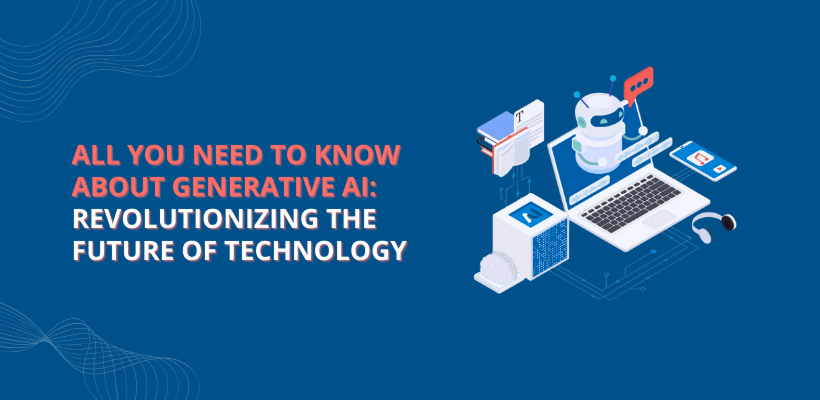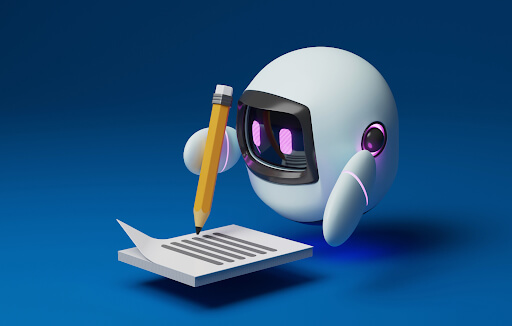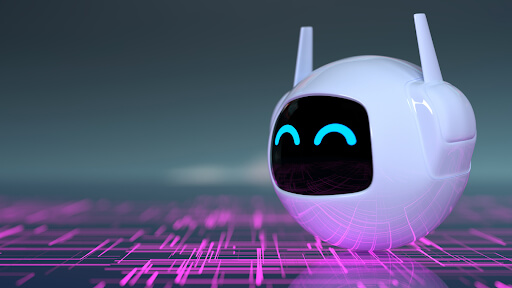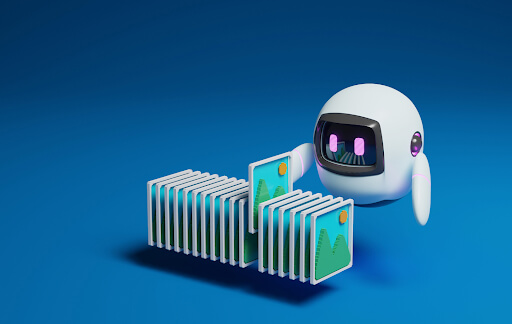 1-800-805-5783
1-800-805-5783 
In today’s digital era, generative AI refers to advanced artificial intelligence systems capable of producing diverse forms of content, including text, images, audio, video, and synthetic data. By 2025, it will have become a mainstream technology, powering applications from customer service and design to scientific research and drug discovery.
Although the concept dates back to the 1960s, recent breakthroughs in large language models, diffusion models, and multimodal transformers have vastly expanded its scope, enabling the creation of high-quality, human-like outputs in seconds and reshaping industries worldwide.
Generative AI has advanced significantly since its early experiments with chatbots in the 1960s. The breakthrough in 2014 with generative adversarial networks (GANs) enabled AI to produce convincingly authentic images, videos, and audio, making possible applications such as deepfakes, movie dubbing, and realistic synthetic data. Since then, diffusion models and hybrid approaches have emerged, joining GANs in raising the bar for realism and variety.
Another significant leap was the development of transformer architectures (since ~2017), which allow training on massive unlabeled datasets. By 2025, transformer-based models will be utilized not only for text but also for code generation, protein/DNA sequence modeling, multimodal tasks (combining image, text, and video), and more.
For example, a recent protein transformer model (SPT-Tiny) achieved 94.3% accuracy on one antibiotic resistance dataset and 99.6% on another (“Protein-FN”) by training from scratch.
Meanwhile, the GAN market (especially image-based) was valued at ~USD 5.52 billion in 2024, with forecasts projecting that it will reach an estimated $36.01 billion by 2030, reflecting a substantial CAGR of 37.7% from 2025 to 2030.
Generative AI begins with a prompt—whether it’s text, an image, or another multimodal input. The system’s advanced algorithms then generate new content in response to these inputs. The journey from a user prompt to a final output is a sophisticated process that leverages several core components.
Inputs are first encoded into vectors, which are numerical representations of the data’s semantic meaning. Neural networks then utilize these vectors to generate new content that aligns with the prompt. While early models, such as GANs and VAEs, laid the groundwork, the field has undergone rapid evolution.
Today, the most prominent models follow a progression:
Agentic Models: Representing the latest evolution, agentic AI models are goal-driven systems that can autonomously plan and execute multi-step tasks. They don’t just generate content; they reason, interact with external tools, and even correct their own errors to achieve a specific objective with minimal human intervention.
Transformers: These architectures, with their “attention” mechanisms, have revolutionized AI by enabling models to track relationships across different parts of a sequence, whether it be words, pixels, or sounds. This made it possible to build and train much larger models on massive, unlabeled datasets, forming the backbone for the modern era of generative AI.
Large Language Models (LLMs): A direct descendant of the transformer architecture, LLMs are massive models trained on vast amounts of text data. They can perform a wide array of tasks, from generating coherent sentences and code to answering questions with remarkable accuracy.
Multimodal Models: These models go beyond a single data type, seamlessly integrating text, images, audio, and video. For example, a single model can now take a text prompt and a picture, then generate a new photo or a detailed description.

To handle the massive scale and ensure accuracy, modern generative AI relies on two key technologies: vector databases and Retrieval Augmented Generation (RAG).
By 2025, transformers will underpin nearly 42% of the generative AI model market. The global generative AI market is expected to reach about US$70 billion this year, with spending projected to grow at ~40-44% CAGR through 2030. In software and IT sectors, 97% of workers are using transformer-based generative tools (mostly LLMs), with many reporting substantial productivity improvements. In India, GenAI is expected to increase productivity by 43-45% across IT services, with nearly 90% of firms trialing projects and about one-third already deploying them in production.
Generative AI has become deeply embedded in creative industries, including art, music, and design. Artists now use AI tools to experiment with styles, generate new ideas, and co-create original pieces.
For example, music models can compose songs in specific genres, visual platforms can produce artwork from text prompts, and design systems can rapidly generate prototypes. By 2025, over 60% of creative professionals are expected to report using generative AI in some part of their workflow, and the global creative AI market is projected to be valued at more than US$20 billion, driving industries such as digital media, fashion, film, and gaming.
Generative AI is transforming customer service by reducing response times and boosting customer satisfaction. Chatbots and virtual assistants powered by advanced language models can now resolve up to 70–80% of routine inquiries without human intervention, while also providing personalized recommendations based on customer history.
By generating context-aware responses from both real-time input and prior interactions, these systems deliver a smoother, faster, and more consistent support experience. In 2025, more than 60% of companies worldwide report deploying generative AI in customer engagement, making it a core driver of efficiency and customer loyalty.
Generative AI has fundamentally changed language translation, moving it from a potential revolution to a core business tool. By 2025, the AI language translation market is expected to be valued at a significant $2.94 billion and will be a critical component of global operations. Models powered by generative AI can analyze and understand the deep context and cultural nuances of different languages, generating not just accurate translations, but ones that sound natural and appropriate in real time.
This capability is transforming industries. In e-commerce, retailers are using these tools to automatically create and localize product descriptions and marketing content for international markets. This trend is expected to drive a 15% increase in conversion rates for retailers using AI chatbots.
For international business, real-time translation tools on platforms like Google Meet enable seamless communication across language barriers. At the same time, travel apps provide instant spoken and written translation, fostering a more inclusive global experience. This shift to highly nuanced and context-aware translation is making multilingual communication more accessible and scalable than ever before.
Generative AI is a standard tool that automates the content creation process, generating text, images, and videos from simple prompts. This is a game-changer for marketers and social media managers who need to produce high-quality, relevant content at scale. A 2025 Forrester report found that marketing teams using generative AI increased their content output by over 40%. The technology now assists with drafting complete blog series, creating personalized ad creatives, and producing professional video shorts from a single script, directly impacting business efficiency.

Generative AI is a key driver for automating manual processes, saving businesses significant time and effort. By 2025, tools powered by generative AI will automate routine tasks, enabling your employees to focus on strategic work. For example, a 2025 Gartner report shows that businesses using generative AI for content creation, report generation, and customer support have seen a 30% increase in overall productivity. This allows employees to shift their focus from repetitive tasks, such as drafting initial reports or answering common customer inquiries, to more complex activities, like strategic planning and high-touch client engagement.
Generative AI can enhance customer engagement by providing personalized and relevant content. Chatbots powered by generative AI can engage with customers in real time, providing instant responses and customized recommendations. This enhances the overall customer experience, leading to increased customer satisfaction and loyalty.
Generative AI can provide valuable insights and recommendations to support decision-making processes. By analyzing large amounts of data and generating relevant content, AI models can help inform decision-making. This can be particularly useful in industries such as finance, healthcare, and marketing, where data-driven decision-making is crucial.
Generative AI can drive innovation by generating new ideas, concepts, and prototypes. By exploring variations and developing unique content, generative AI models can enhance the creative process and spark innovative ideas. This can be valuable for industries such as product design, architecture, and fashion, where innovation is key to staying competitive.
Also Read: Digital Product Design: All You Need to Know.
One limitation of generative AI is the potential for accuracy and bias issues in the content it generates. Early implementations of generative AI models have encountered issues with accuracy and bias, leading to the production of inaccurate or misleading content. It is essential to carefully train and fine-tune generative AI models to ensure accuracy and minimize bias in the generated content.
Generative AI raises concerns about trust and transparency. As the technology continues to evolve, it is essential to understand how generative AI models generate content and the sources of information they rely on. Transparency in the training data and algorithms used in generative AI models is essential for building trust and ensuring the ethical use of this technology.
Generative AI raises ethical concerns, particularly in the context of deepfakes and AI-generated content. Deepfakes, digitally forged images or videos, can be created using generative AI technology, raising concerns about the spread of misinformation and deception. It is essential to address these ethical implications and develop guidelines and regulations to ensure the responsible use of generative AI.
Generative AI has the potential to disrupt existing industries and business models. Industries heavily relying on human creativity, such as art, music, and content creation, may experience significant changes as generative AI becomes more advanced. Businesses must adapt to these changes and explore how generative AI can be integrated into their existing workflows and processes.
AI art, which refers to any digital art created or enhanced using AI tools, has moved from a novelty to a critical part of the creative landscape. In 2025, generative AI will be a standard collaborator for artists, enabling new creative possibilities and unprecedented output.
A 2025 report projected that the global AI image generation market would reach $1.3 billion that year, with AI-generated art accounting for 5% of the total contemporary art market. Artists now utilize these tools to generate not only images but also music and poetry, enabling them to experiment with various styles and techniques rapidly. This shift empowers artists to scale their work and focus on higher-level creative direction.
Image-to-image translation is a process by which generative AI transforms visual content, seamlessly converting images from one style or domain to another. For example, these models can turn a simple sketch into a detailed, photorealistic rendering or adapt a product photo to fit different seasonal backgrounds.
This technology is now a critical tool in multiple industries. In fashion, it enables virtual try-ons and digital runway shows. For interior design, it generates realistic mockups from basic layouts. In advertising, it allows teams to quickly create a wide variety of ad creatives from a single source image, saving significant time and resources.
Generative AI has become a core tool for music creation, enabling composers and musicians to explore new musical ideas rapidly and efficiently. In 2025, the generative AI market in the music industry is valued at over $2.9 billion, indicating its mainstream adoption.
The technology now generates sophisticated melodies, harmonies, and even entire songs based on a given prompt or style, helping artists produce everything from professional-quality soundtracks for films to unique soundscapes for podcasts. This is particularly useful for musicians seeking inspiration or looking to experiment with different musical genres without incurring the time-consuming costs of studio sessions.
Generative AI is a core part of software development. By 2025, over 80% of developers will be utilizing AI coding tools, such as GitHub Copilot, to streamline their development processes. The tech generates code snippets, suggests improvements, and helps with debugging, boosting both efficiency and code quality.
Generative AI has become a core component of the finance industry’s defense against fraud. The technology no longer just looks for known fraud patterns; it actively identifies new and evolving threats by analyzing large volumes of financial data in real time. The global fraud detection and prevention market, which heavily relies on AI, is projected to reach an estimated $65.68 billion by 2030, growing at a CAGR of 15.5% from 2025.
By learning and adapting, these models can spot subtle anomalies in user behavior, such as a sudden change in transaction frequency or a login from an unusual location, which often indicate fraudulent activity. This helps financial institutions enhance their detection systems and proactively protect customers’ assets from increasingly sophisticated attacks, such as synthetic identity fraud.
Generative AI is transforming the legal profession by automating document review, drafting, and contract analysis with improved speed and accuracy. These tools save legal professionals hundreds of hours annually, with some studies showing lawyers can save up to 32.5 working days per year. This shift allows legal teams to focus on higher-value tasks, strategic planning, and client relationships, moving away from the traditional billable hour model.
Generative AI has become a core part of manufacturing and quality control. By analyzing real-time data from sensors and cameras, AI models can identify defects and anomalies with a precision that far exceeds that of manual inspection.
A 2025 Averroes AI report found that AI-driven visual inspection systems are achieving 97% accuracy in defect detection, a notable improvement over manual methods. This technology helps manufacturers not only optimize production but also create a “digital twin, “a virtual replica of a factory, simulate and fix errors before they ever reach the physical production line, ultimately minimizing waste and defects.
Generative AI is a standard tool in film and media production, no longer just a futuristic concept. It’s streamlining workflows from pre-production to final delivery. In Hollywood, over 50% of major studios are using AI for pre-visualization and digital world-building. The tech assists in generating highly realistic visual effects, creating virtual sets, and even generating rough cuts of scenes. This allows filmmakers to accelerate the creative process, produce content more efficiently, and experiment with complex creative ideas without the high costs traditionally associated with them.
The future of generative AI lies in its seamless integration into existing tools and workflows. Generative AI capabilities are now embedded directly into the software you use every day. You can leverage these features directly within platforms like Adobe Creative Cloud to generate images or Microsoft 365 to draft documents. This approach embeds AI into your day-to-day workflows, enhancing productivity and creativity without requiring changes to your core applications.
Generative AI is making significant advances in language translation, drug discovery, and design. The technology now enables more accurate, real-time communication, accelerates the discovery of new drug compounds, and helps designers explore an infinite number of concepts. This integration pushes the boundaries of creativity and efficiency across multiple industries.
Generative AI is already transforming human expertise and the nature of work. The technology automates routine tasks, freeing human experts to focus on more creative and strategic aspects of their jobs. This shift requires individuals to adapt their skills and collaborate with new technologies to remain relevant.
Today’s workforce is not competing with AI, but instead, individuals who leverage AI are outperforming those who do not. The work itself is shifting from repetitive tasks to focus on critical thinking, problem-solving, and human-machine collaboration.

No single person created generative AI; it is the result of decades of research. The journey began with pioneers like Joseph Weizenbaum, who developed one of the earliest conversational agents, ELIZA, in the 1960s. A significant turning point occurred in 2014, when Ian Goodfellow introduced Generative Adversarial Networks (GANs), which enabled the creation of realistic images.
The field then rapidly advanced following the 2017 introduction of the Transformer architecture, which laid the groundwork for modern large language models. Since then, organizations like OpenAI, with its GPT series, and Google, with its Gemini models, have significantly refined the technology, bringing powerful generative AI to the world.
Generative AI is not just a future concern; it is already impacting the workforce. While it automates tasks like content creation, customer service, and data analysis, the overall effect is a net positive for jobs. According to a 2025 World Economic Forum report, the technology is expected to create 78 million more jobs than it displaces by 2030.
This transition frees up human experts from repetitive work, allowing them to focus on strategic and creative tasks. It also creates entirely new roles, such as AI Ethics Specialists, Prompt Engineers, and AI Trainers, who ensure the technology is used effectively and responsibly. The key to staying relevant is not to compete with AI but to learn how to collaborate with it.
In 2025, building a generative AI model typically involves fine-tuning a pre-trained foundation model rather than training one from scratch. This process consists of selecting an appropriate model, curating a high-quality, task-specific dataset, and then fine-tuning the model to adapt its vast knowledge to your domain. After rigorous evaluation, the model is ready for deployment.
The debate over whether AI will gain consciousness is more active than ever. While generative AI creates remarkably human-like content, the consensus among researchers is that it lacks true consciousness or self-awareness. However, the sheer scale and emergent capabilities of modern AI are forcing a re-evaluation of what constitutes sentience. Creating a truly conscious AI remains a major scientific and philosophical challenge, with ongoing exploration into how consciousness might be measured.
Generative AI has become a core business tool, actively automating processes and enhancing efficiency across industries. The technology is now seamlessly integrated into the software you use every day, from drafting emails to generating creative content. This transformation frees employees from repetitive tasks, allowing them to focus on more strategic and innovative work. While this is a significant benefit, it also introduces challenges, such as addressing bias in the model’s output and ensuring the ethical use of the technology.
This shift in the workplace is redefining human expertise. Generative AI is not just a tool for automation; it is fundamentally changing the nature of work itself. As the technology handles routine tasks, it creates new roles and opportunities that require uniquely human skills, such as problem-solving, critical thinking, and empathy. The goal is no longer for people to compete with AI but to learn how to collaborate with it, leveraging its capabilities to unlock new opportunities for innovation and growth.
At [x]cube LABS, we craft intelligent AI agents that seamlessly integrate with your systems, enhancing efficiency and innovation:
Integrate our Agentic AI solutions to automate tasks, derive actionable insights, and deliver superior customer experiences effortlessly within your existing workflows.
For more information and to schedule a FREE demo, check out all our ready-to-deploy agents here.
Tags: AI gen, Gen AI, genAI, Generative AI